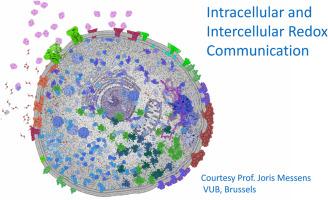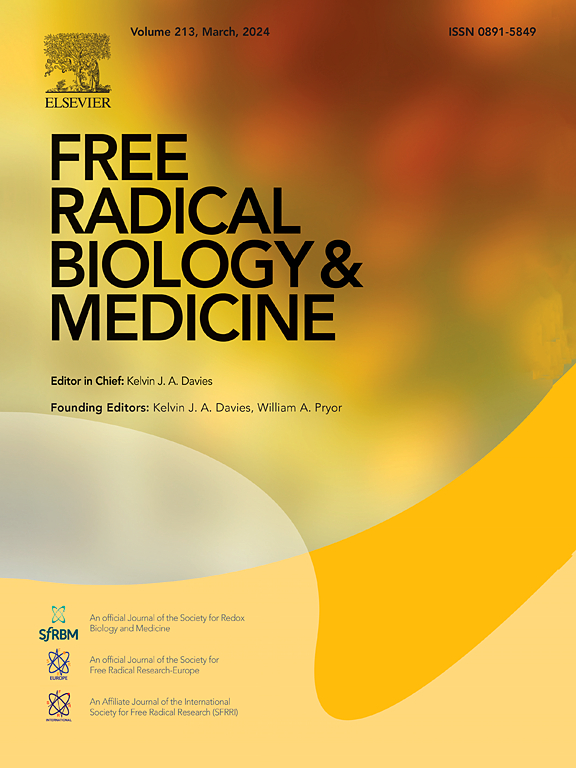SFRRI 首届阿尔贝托-博韦里斯奖讲座:细胞内和细胞间氧化还原反应的动态交流。
IF 7.1
2区 生物学
Q1 BIOCHEMISTRY & MOLECULAR BIOLOGY
引用次数: 0
摘要
细胞和器官的新陈代谢是通过各种信号机制组织起来的,包括氧化还原、Ca2+、激酶和电化学途径。氧化还原信号在多个层面发挥作用,从微观环境中单个分子之间的相互作用,到亚细胞器、单个细胞、器官和整个机体之间的交流。氧化还原反应是一个动态和持续的时空过程。本文的重点是过氧化氢(H2O2),它是一种针对氧化还原活性蛋白质半胱氨酸硫酸盐的关键第二信使。细胞膜上的 H2O2 梯度由专门的水蒸气蛋白过氧化物酶控制。具有氧化还原活性的内体(称为氧化还原小体)在质膜上形成。细胞与细胞之间的氧化还原交流涉及直接接触,如通过连接子传递分子的细胞间隙连接。此外,还通过向周围空间释放具有氧化还原作用的分子和酶,以及通过各种胞外囊泡(EVs)向附近或远处的靶细胞传递这些信号。本文章由计算机程序翻译,如有差异,请以英文原文为准。

Dynamics of intracellular and intercellular redox communication
Cell and organ metabolism is organized through various signaling mechanisms, including redox, Ca2+, kinase and electrochemical pathways. Redox signaling operates at multiple levels, from interactions between individual molecules in their microenvironment to communication among subcellular organelles, single cells, organs, and the entire organism. Redox communication is a dynamic and ongoing spatiotemporal process. This article focuses on hydrogen peroxide (H2O2), a key second messenger that targets redox-active protein cysteine thiolates. H2O2 gradients across cell membranes are controlled by peroxiporins, specialized aquaporins. Redox-active endosomes, known as redoxosomes, form at the plasma membrane. Cell-to-cell redox communication involves direct contacts, such as per gap junctions that connect cells for transfer of molecules via connexons. Moreover, signaling occurs through the release of redox-active molecules and enzymes into the surrounding space, as well as through various types of extracellular vesicles (EVs) that transport these signals to nearby or distant target cells.
求助全文
通过发布文献求助,成功后即可免费获取论文全文。
去求助
来源期刊

Free Radical Biology and Medicine
医学-内分泌学与代谢
CiteScore
14.00
自引率
4.10%
发文量
850
审稿时长
22 days
期刊介绍:
Free Radical Biology and Medicine is a leading journal in the field of redox biology, which is the study of the role of reactive oxygen species (ROS) and other oxidizing agents in biological systems. The journal serves as a premier forum for publishing innovative and groundbreaking research that explores the redox biology of health and disease, covering a wide range of topics and disciplines. Free Radical Biology and Medicine also commissions Special Issues that highlight recent advances in both basic and clinical research, with a particular emphasis on the mechanisms underlying altered metabolism and redox signaling. These Special Issues aim to provide a focused platform for the latest research in the field, fostering collaboration and knowledge exchange among researchers and clinicians.
 求助内容:
求助内容: 应助结果提醒方式:
应助结果提醒方式:


